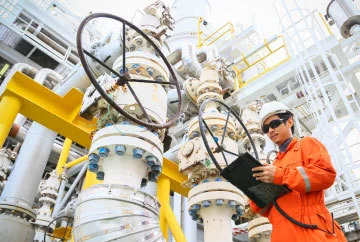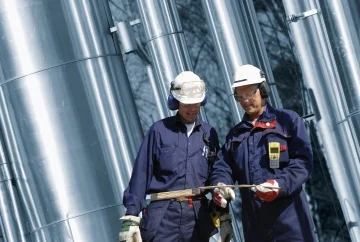Better Inventory Control
With
inventory visibility, industries can handle stock effectively by tracking and controlling it, avoiding a situation where a unit is overstocked or understocked. Spare parts that go into production and drilling operations are expensive and hard to manage; with asset management, part availability is increased with minimum inventory investment.
With serialized tool tracking, mobile storage containers and safety compliances ultimately reinforce a habit of productivity and accountability. Introducing a policy for managing and handling deliverables helps speed up product delivery while maintaining quality and safety.
Click to zoom in
Improved Resource Management
Get a demand forecast based on the current utilization of resources and assets. With the current inventory allocation, the system prepares a list of required assets that must be prepared to fulfill future orders. Asset management also organizes the onboarding process of assets to ensure it complies with policies and practices. It helps create an analysis based on the demand and supply gap and identify assets that are easy to allocate regularly with low costs.
Cost Savings
Against the backdrop of streamlining operations, maintenance, and asset allocation, the main motive is to enhance operational efficiency. These
solutions improve the overall uptime and performance of assets, also improving the life expectancy of equipment. Asset management strategy insulates industries from market volatility by optimizing operations and reflecting long-term profitability.
Efficient product usage, theft prevention, easy identification, and asset condition monitoring helps bring down additional costs and refine processes.
Regulatory Compliance
Any oil and gas industry must comply with relevant laws and regulations to ensure a smooth business operation. As operations increase, the compliance demands catch up with the regulatory changes that one incurs from streamlining their processes.
An asset management system helps keep track of workflows with regular audits, databases, compliance documentation by automating these tasks and offering ease in monitoring. Centralize your regulatory compliance efforts with an asset management system as the space is constantly evolving to modify strategies based on requirements.
Improved Production
Using an asset management system with predictive maintenance solutions gives companies the ability to intelligently interact with all their resources in the supply chain, access and analyze gaps, and prevent problems or failures before they interfere with production.
Asset management allows you to effectively address all key priorities of oil and gas companies, increasing operational efficiency. It contributes to continuous improvement if the performance of an asset is optimized, and if it performs correctly without any problems, the performance will increase and lead to better production.
Asset Management System in Oil and Gas Industry
Oil and gas companies own or lease various physical assets such as pipes, crossings, downhole equipment, pressure control equipment, logging equipment, storage containers, and other field equipment. Consequently, resources are very important not only for day-to-day operations but also for business.
This is a major challenge for moving industries such as oil and gas, where real-time monitoring of the location, performance, and safety of all assets is critical to streamline processes, eliminate downtime, reduce costs and minimize environmental impact. With the help of a system, one can track asset maintenance history, asset movements, etc. It becomes a complete control system that ensures safe and reliable operation over the asset's entire life cycle.
How to select the right system?
To identify the right system, it is important to understand the objectives and expectations derived from the current outcome of the industry. Managing such diverse resources in many places is a tedious task. The processes used to manage resources must be coordinated to find the optimal process with cost, risk, and performance throughout the life cycle. Oil and gas companies need to use proactive methods to streamline the system and check compatibility that has the best outcome with the product vertical.
Examples of Asset Management in the Oil & Gas Industry
Fleet Management
Oil and gas companies in diverse and demanding conditions require fleet management and regular maintenance to minimize breakdowns. With vehicle tracking, optimization, scheduling, and overall effective utilization of resources, automated reports and insights over fleet operations and increased labor safety.
Process Optimization Through Maintenance Data
Based on historical data and performance metrics, the analytics collected can identify the root causes and failure-causing parameters. Based on the framework
asset management system builds a foundation and works to deliver an end-to-end solution that is completely accurate and simplifies process management.
Predictive Maintenance
The key element of asset management lies in increasing
asset shelf life while minimizing expenditures that involve downtime and spare parts replacement. It improves product reliability and increases plant efficiency increasing revenue and avoiding unplanned shutdowns. Predictive maintenance is beneficial in reducing environmental impact; it also helps maintain an operational focus for maintenance staff to stay aligned and integrated into the system.








